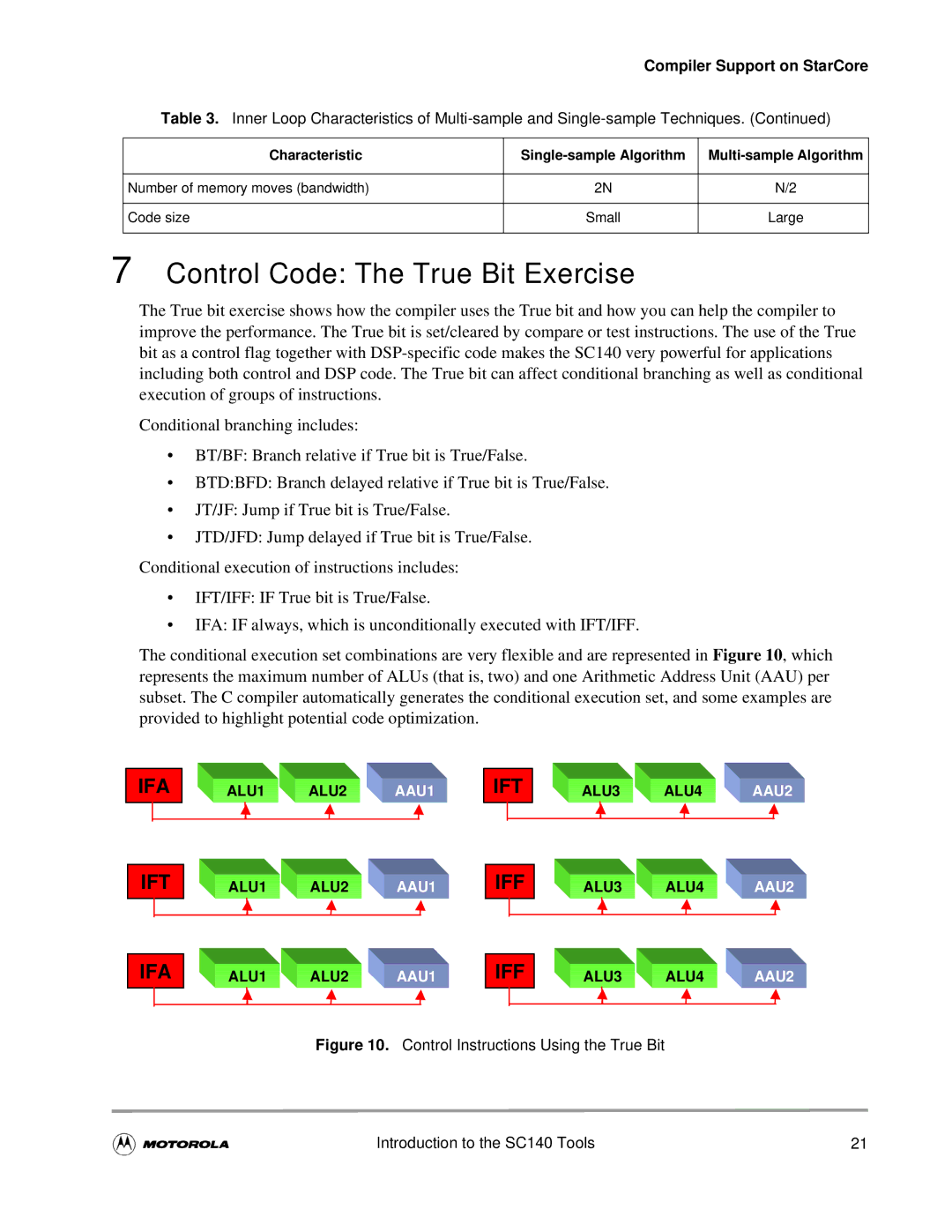
Compiler Support on StarCore
Table 3. Inner Loop Characteristics of
Characteristic | ||
|
|
|
Number of memory moves (bandwidth) | 2N | N/2 |
|
|
|
Code size | Small | Large |
|
|
|
7 Control Code: The True Bit Exercise
The True bit exercise shows how the compiler uses the True bit and how you can help the compiler to improve the performance. The True bit is set/cleared by compare or test instructions. The use of the True bit as a control flag together with
Conditional branching includes:
•BT/BF: Branch relative if True bit is True/False.
•BTD:BFD: Branch delayed relative if True bit is True/False.
•JT/JF: Jump if True bit is True/False.
•JTD/JFD: Jump delayed if True bit is True/False. Conditional execution of instructions includes:
•IFT/IFF: IF True bit is True/False.
•IFA: IF always, which is unconditionally executed with IFT/IFF.
The conditional execution set combinations are very flexible and are represented in Figure 10, which represents the maximum number of ALUs (that is, two) and one Arithmetic Address Unit (AAU) per subset. The C compiler automatically generates the conditional execution set, and some examples are provided to highlight potential code optimization.
IFA
ALU1 ![]() ALU2
ALU2 ![]() AAU1
AAU1
IFT
ALU3 ![]() ALU4
ALU4 ![]() AAU2
AAU2
IFT
ALU1 ![]() ALU2
ALU2 ![]() AAU1
AAU1
IFF
ALU3 ![]() ALU4
ALU4 ![]() AAU2
AAU2
IFA
ALU1 ![]() ALU2
ALU2 ![]() AAU1
AAU1
IFF
ALU3 ![]() ALU4
ALU4 ![]() AAU2
AAU2
Figure 10. Control Instructions Using the True Bit
Introduction to the SC140 Tools | 21 |
